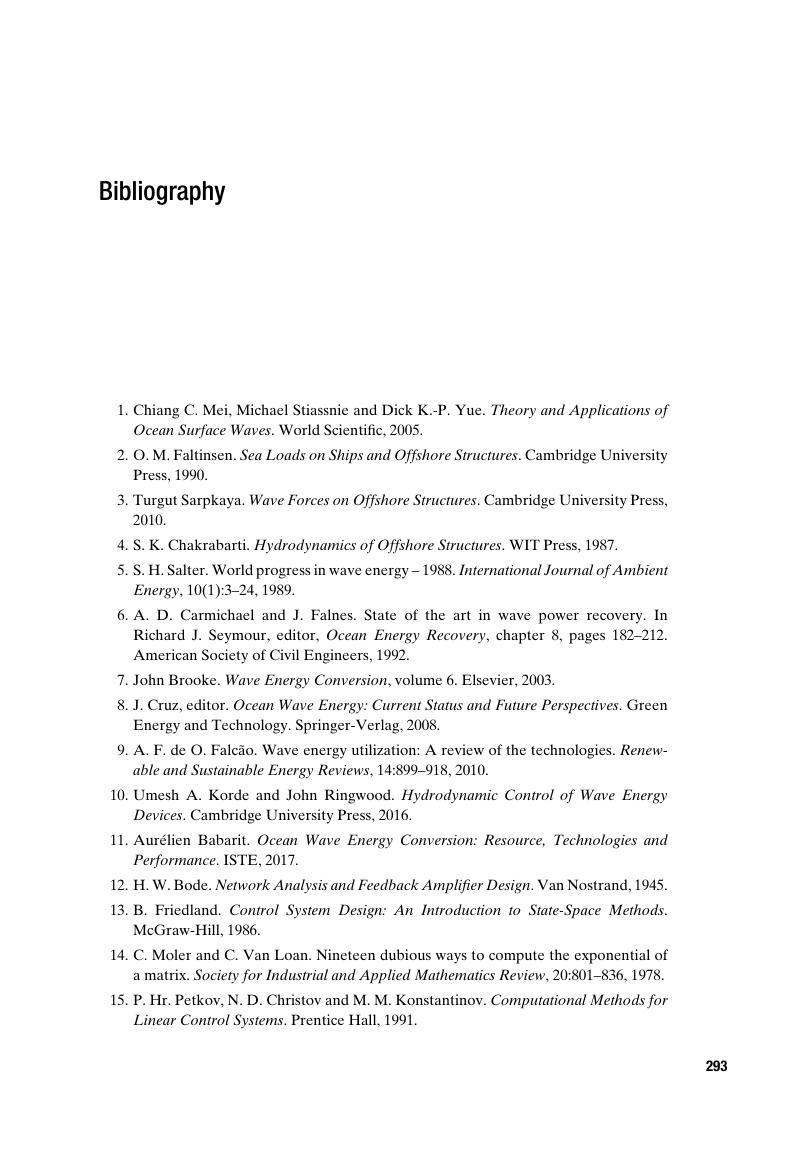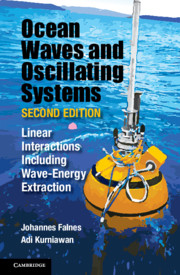Book contents
- Frontmatter
- Contents
- Prefaces
- Chapter One Introduction
- Chapter Two Mathematical Description of Oscillations
- Chapter Three Interaction between Oscillations and Waves
- Chapter Four Gravity Waves on Water
- Chapter Five Wave–Body Interactions
- Chapter Six Oscillating-Body Wave-Energy Converters
- Chapter Seven Oscillating Water Columns and Other Types of Wave-Energy Converters
- Chapter Eight Wave-Energy Converter Arrays
- Bibliography
- Index
- References
Bibliography
Published online by Cambridge University Press: 12 May 2020
- Frontmatter
- Contents
- Prefaces
- Chapter One Introduction
- Chapter Two Mathematical Description of Oscillations
- Chapter Three Interaction between Oscillations and Waves
- Chapter Four Gravity Waves on Water
- Chapter Five Wave–Body Interactions
- Chapter Six Oscillating-Body Wave-Energy Converters
- Chapter Seven Oscillating Water Columns and Other Types of Wave-Energy Converters
- Chapter Eight Wave-Energy Converter Arrays
- Bibliography
- Index
- References
Summary

- Type
- Chapter
- Information
- Ocean Waves and Oscillating SystemsLinear Interactions Including Wave-Energy Extraction, pp. 293 - 300Publisher: Cambridge University PressPrint publication year: 2020



